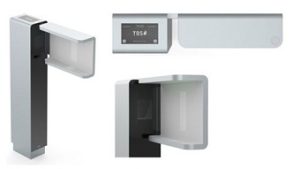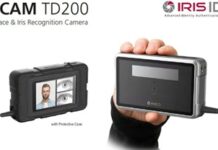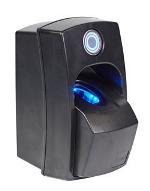
The newest addition to the TBS comprehensive portfolio of biometric readers and solutions is the 3D Fly. An innovative sensor offering on-the-fly user identification, meaning users do not have to physically stop at the device. According to TBS the launch of the 3D Fly presents a new milestone in the integration of consent-based biometrics into today’s on-the-fly lifestyle.
TBS 3D Fly is a touchless scanning terminal meeting the highest hygiene and security standards while using one of the strongest and most stable biometric markers in the human body: our fingerprints. Moreover, the AI-assisted hand recognition technology significantly increases user throughput without compromising on security. This latest innovation from TBS is the only on-the-fly alternative with no compromises.
The 3D Fly sensor captures a high-resolution picture of the entire hand and extracts the biometric features of up to four fingers, resulting in superior recognition performance. This superior sensor technology – combined with fast data processing – identifies a person within a second. The process has been designed to be so fast that users can present their hands whilst walking towards 3D Fly and through the speed gate with no stopping no slowing down.
The high sensor precision is reflected by the large storage capacity of templates of over 10,000 users in identification (1:N) mode. In addition biometrics can be combined with a PIN code to create a two-step authentication process (1:1) for high-security sites and increase user count to 100,000.
The 3D Fly is designed for access control in high throughput environments, namely on-the-fly applications such as speed gates, turnstiles, sliding doors – any access point where security, convenience, and speed are critical. From financial institutions to government bodies, corporations, or critical infrastructures such as energy, healthcare, data, and logistic centres, the 3D Fly will be one of the most integral parts of access control – starting at the main entrance of such premises.
When faced with the challenge of picking ‘the right’ biometrics technology, concerns about user & data management rightfully arise. Indeed, not all technologies are created equal. TBS offers what it calls ‘responsible biometrics’, that is, its devices work exclusively in a consent-based manner.
The 3D Fly provides users with a secure authentication with a friendly user experience, requiring explicit user consent and cooperation every time they present their hand to the sensor. All the while being legally compliant without raising the ethical concerns related to passive surveillance capabilities of traditional face recognition technologies











